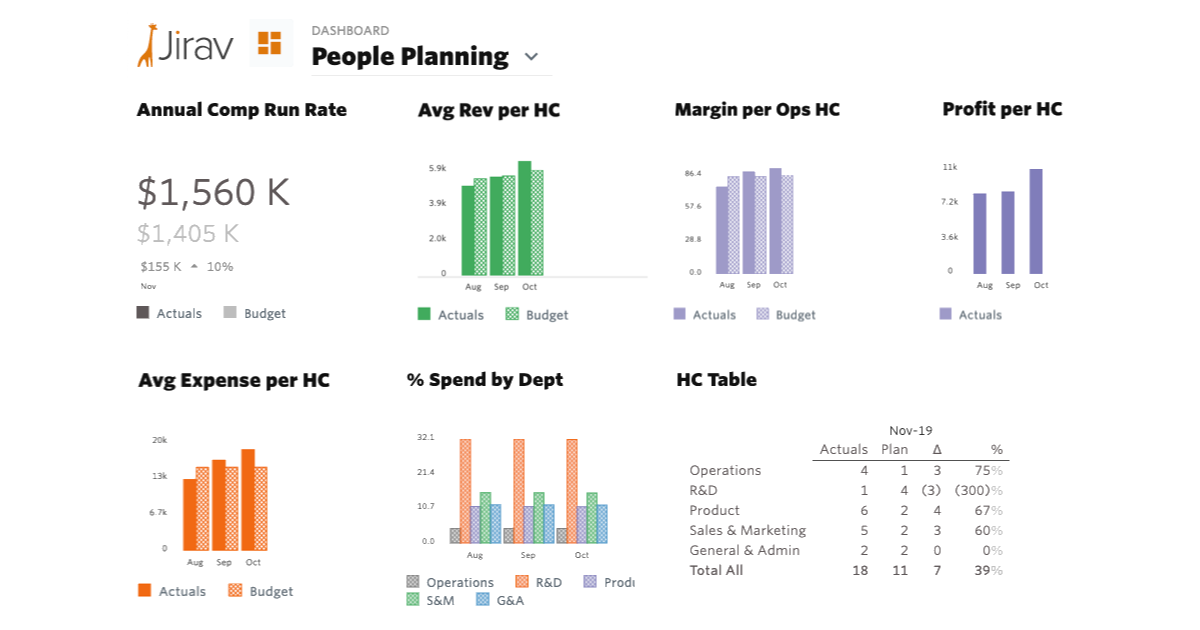When you think about forecasting and financial modeling, does your mind go straight to P&L statements and dashboards? That’s the case for many CFOs and members of the finance team.
Financial statements are actually one of the final pieces of the forecast, not the beginning.
When you think about it, the same is true for any actual figures. They’re the end of the road. By the end of your operational cycles, revenue ends up in your bank account. But there are a number of business functions that occur before that can happen. Things like:
- Sales data and marketing spend help you drive your top-line revenue.
- Hiring employees and spending money on training long before they begin to benefit the company.
- Build or procure inventory based on material or unit costs, based on your sales forecast.
Because of the strong link between financial success and non-financial KPI performance, using KPIs to build your forecast gives a comprehensive view of an organization’s performance, helping better achieve goals.
Jirav allows users to add virtually any metric, including non-financial KPIs, directly to their dashboards. This helps users see the impacts those figures have on their forecasting models.
To make truly reliable projections, you need to go beyond looking at financial metrics in your dashboard. You need to start your forecasting process at the beginning of your sales pipeline and consider all major operational drivers.
Forecasting with operational drivers
Some of the most important non-financial metrics are connected to sales and marketing. If you’re not using them to forecast your top-line, your forecast isn’t bringing all the value that it could. Essentially, you’re leaving something on the table.
Below are some of the most important KPIs:
- Customer acquisition cost (CAC)
- Total leads
- Close rate
- Churn rate (for software companies)
- Lifetime value (LTV)
- Revenue per employee
To make a reliable forecast that helps you confidently make decisions about the direction of the business, you’ve got to know those numbers in and out. Ignoring them when forecasting means your financial forecast is merely a lagging indicator.
For example, knowing how much it costs you to acquire new customers tells you how quickly you can grow. How well (or if) certain marketing channels, i.e. social media ads or email marketing, are performing can indicate where you should be putting your resources.
KPIs also help you drive team accountability. If your employees know what they’re working towards and why, they will feel more empowered to act in ways that help the company achieve those goals.
Let’s take a closer look at those metrics.
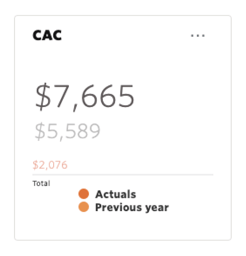
Customer acquisition cost
Often abbreviated as CAC, customer acquisition cost tells you the level of resources necessary in order to acquire new customers.
This KPI is calculated by dividing your total cost of sales and marketing by the number of new customers acquired over a given period of time. It includes expenses like:
- Ad spend
- CRM tools
- Content creation
- Sales and marketing employee salaries
How does your CAC affect your forecast? By knowing your CAC, you can determine how much the company can grow in a given time period. It also tells you how much you need to spend in order to achieve that growth. Lowering CAC increases the efficiency of your growth, letting you do more with less.
Total leads
The number of total leads shows the total number of prospective buyers the company has in the pipeline. There are several methods of calculating the metric, and different businesses measure it in different ways.
Essentially, it’s a measure of your pool of potential future clients.
As a major operational driver for your sales forecast, planning more (or fewer) total leads can have major impacts on the financial forecast. More leads generally mean more potential customers. This driver is closely linked with the next driver.
Close rate
Close rate is the average percentage of your total leads that become customers. The KPI shows both the efficiency and effectiveness of your sales and marketing channels. It’s also a good metric to benchmark between teams or against competitor companies in similar industries.
To calculate your average close rate, divide the number of deals closed by the total number of leads that the team is working on.
Together with the number of total leads, close rate can impact the level of revenue you are forecasting. A higher close rate on the same number of leads means more new customers and higher sales. Keeping a close eye on these factors helps ensure you’ll meet your targets for the year.
Churn rate 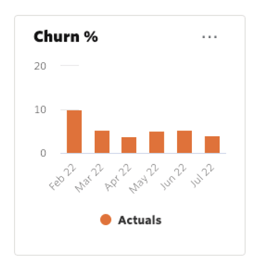
Churn is typically used in SaaS companies or other subscription-based businesses. It shows the percentage of total customers who leave during a certain period of time. For example, if you have 100 customers and 10 decide not to renew during the month, your churn rate would be 10%.
Churn can have a big impact on your revenue forecast. In order for the company to grow, you need to add more customers each month than you churn. Forecasting a reduction of your churn rate means fewer customers are leaving each month.
All other factors being equal, reducing churn will improve sales growth.
Lifetime value 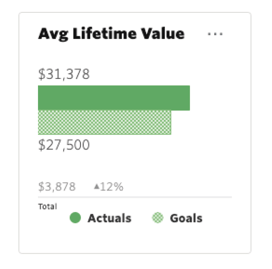
Customer lifetime value (LTV) is a projection of the total amount of revenue a customer will generate over the lifetime of the relationship. Calculating LTV takes several steps and requires making some assumptions about your customers’ purchasing habits.
For example, the calculation could be:
- Average sales per customer, per visit * average visits per month = monthly customer value
- Monthly customer value * number of months a customer will remain a customer = LTV
In the case of a restaurant or a grocery store, the customer lifetime could be 20-30 years or the lifetime of the business.
Knowing your customer LTV and comparing it with other metrics, like CAC, gives a good indicator for the acceptable amount you can spend for customer acquisition. If you’re working to improve customer LTV, you can maybe afford a higher customer acquisition cost.
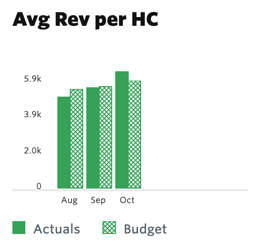
Revenue per employee
This KPI often appears in dashboards or financial reporting. It’s basically a measure of how much revenue each employee is “generating” on average. Revenue per employee is especially useful when comparing between teams or benchmarking against competitors in similar industries.
How can it impact the forecast? One major factor in improving revenue per employee is reducing employee turnover. Because it takes some time for new employees to get up to speed, especially in sales and marketing, longer tenure generally means higher revenue per employee.
Organizations that are more streamlined also tend to have higher revenue per employee. Forecasting a decrease is generally (but not always) a bad sign for the business. It can show that efficiency is decreasing, or that the company is gearing up for what it hopes to be a major growth phase.
However, it’s important to not manage only by KPIs. Excessively high revenue per employee can also mean you’re overworking your employees.
Start forecasting in Jirav
At its core, a forecast is a projection of where the business plans to be in the future. But the financial statements and dashboards are merely the aggregated outputs of the operational planning.
To have a functional, reliable forecast, it’s important to focus on the non-financial operational drivers affecting your sales. Metrics like CAC, churn, and LTV are all leading indicators of how sales are developing.
Jirav’s driver-based forecasting tools allow you to build your forecast based on these drivers. Users can add virtually any metric directly to their dashboard to see how these figures factor into their forecasting models.
Are you ready to start forecasting with Jirav?








